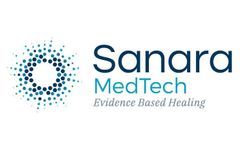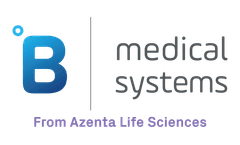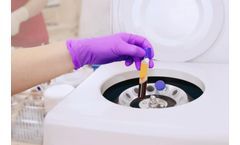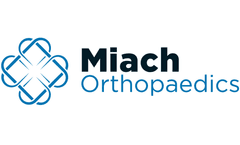Blood Clots Articles & Analysis
39 articles found
Mechanism of Action Serrapeptase exhibits unique mechanisms that contribute to its effectiveness in treating various conditions: Anti-inflammatory Effects: By degrading fibrin, a protein involved in blood clotting and tissue healing, serrapeptase can help reduce inflammation. ...
Hip fractures are common, especially in older adults, and require timely medical and surgical intervention. These injuries can significantly impact a patient’s mobility, quality of life, and overall health. Hip fractures are a medical emergency, and delayed treatment can lead to severe consequences. Elderly patients are particularly vulnerable to complications from prolonged immobility, ...
One of the more commonly asked questions sleep apnea experts answer is “Does sleeping sitting upright help with sleep apnea?” We already know that when a person with sleep apnea sleeps on their back, gravity closes or significantly narrows their airway (the space formed at the back of the mouth and upper throat areas). At the same time, the amount of air that enters their lungs ...
The field of medicine is constantly evolving, with new procedures and technologies emerging that improve patient outcomes and reduce recovery times. As these innovations advance, the materials that make them possible become increasingly important. One such group of materials, fluoropolymers, is proving to be essential for a variety of cutting-edge medical procedures. Known for their exceptional ...
Bleeding disorders, a collection of conditions that prevent blood from clotting correctly, can be life-threatening. They’re caused by issues such as aberrant platelets, abnormal clotting proteins, or problematic blood vessels. Understanding how blood clots normally can help elucidate why ...
Correct fresh frozen plasma storage is vital for safe and efficient treatment of patients with blood clotting disorders in various situations.This article will explore fresh frozen plasma preparation, storage and uses and discuss the Froilabo products that can aid your fresh frozen plasma storage.Fresh Frozen Plasma PreparationPlasma is the liquid portion of ...
Current therapy is largely focused on the management of symptoms and comorbidities, such as medications to lower blood sugar in diabetic patients. Aside from lifestyle changes, physicians generally prescribe medications which reduce heart rate, lower blood pressure, reduce cholesterol levels and decrease the risk of blood clots. ...
This prevents it from filling with enough blood during the cardiac cycle’s diastole phase. The filling occurs with higher pressure, which reduces the amount of blood available to pump throughout the body during the systole phase. ...
‘This new procedure is similar to a thrombectomy, which is a procedure used to remove a blood clot from blood vessels in the brain after a stroke. The device works in the same way, using a stent to catch the clot and then remove it, but it is bigger – because veins in the legs are much bigger than arteries in the ...
As important as this fluid is for proper knee function, it also prevents the formation of blood clots that are critical for healing after a tear. How the BEAR Implant Works The BEAR Implant acts as a bridge between the two ends of a torn ACL, enabling the body to heal itself. A small amount of the patient’s own blood is inserted into the ...
As important as this fluid is for proper knee function, it also prevents the formation of blood clots that are critical for healing. As a result, ACL tears are often treated with surgery. ...
As important as this fluid is for proper knee function, it also prevents the formation of blood clots that are critical for healing. How does the BEAR Implant work? ...
As important as this fluid is for proper knee function, it also prevents the formation of blood clots that are critical for healing. As a result, ACL tears are often treated with surgery. ...
When certain organs and tissues of the human body are damaged or disease occurs, some enzymes are released into blood, urine or body fluids. Such as acute pancreatitis, serum and urine amylase activity is significantly increased; hepatitis and other causes of liver damage, hepatocyte necrosis or enhanced permeability, a large amount of transaminase is released into the ...
To treat HAE, Intellia’s therapy targets and disrupts the gene KLKB1, which encodes for prekallikrein, a precursor to the kallikrein protein involved in blood clotting. Treatment with NTLA-2002 reduced the concentration of kallikrein in both low- and high-dose patient cohorts by 65% and 92%, respectively.1 These results bring the hope of a one-time ...
Hemafuse is a handheld device that uses a Yankauer suction tip to salvage blood from a patient with internal bleeding so the blood can be re-used in the patient if donor blood is unavailable or in limited supply. ...
Before a patient can get fit with their multi-articulating myoelectric hand, it’s vital that their prosthetist conducts a thorough evaluation and understands the cause of amputation or limb loss. This information helps prosthetists understand what a patient’s needs are so they can determine which prosthetic hand is the best fit for them. With this in mind, we’ll discuss the ...
When certain organs and tissues of the human body are damaged or diseased, certain enzymes are released into blood, urine or body fluids. Such as acute pancreatitis, serum and urine amylase activity were significantly increased. Hepatitis and other causes of liver damage, hepatocyte necrosis or increased permeability, a large amount of transaminase are released into the ...
Over time, excessive drinking can raise your blood pressure. Binge drinking can actually lead to an irregular heartbeat known as arterial fibrillation, which increases your risk of heart attack and stroke. ...
Discovery In the late 19th century, researchers attempted to produce a drug with a hemostatic effect by injecting a peptone and inducing the release of an anticoagulant. The water-soluble substance isolated from the liver was heparin, but no one knew it at the time. What unfolded over the next four decades would change the trajectory of anticoagulation treatment. By 1915, the most prominent ...














